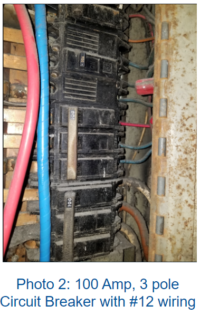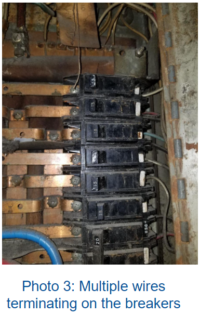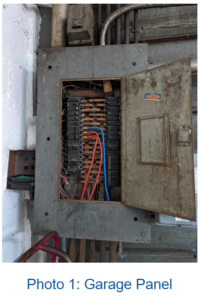Electric Vehicle Charging: Pt. 2
January 3, 2024 Newsroom
As discussed in Electrical Vehicle Charging: Part 1, the number of EV’s on the road increases daily and with it, the demand for “refueling” these vehicles is also growing. Before proceeding with adding EV chargers to your parking garage or lot, it is imperative to ensure your building is prepared to support the additional electric loads. But what changes are needed to the building’s electrical system? Retaining a consulting engineer, such as Collado Engineering, to address this question is the first step. The following is a case study detailing what could happen when the proper steps aren’t taken to prepare prior to installation.
 Case Study:
Case Study:
The parking garage in a COOP building is leaded by a third-party operator. Electric Vehicle Charging Stations were improperly installed by the vendor’s electrician. What was intended to be a benefit to the building and its parking garage users, resulted in more headaches for the building management.
The property manager then retained Collado Engineering to remedy the issues brought to light by the installation. We performed a review of the installation including the electrical infrastructure supplying the garage panel and the loads connected to the panel in question.
The garage panel was found to be past its useful life and once the panel door was opened, found to contain exposed busbars (see photo 1), creating a Safety Hazard. The panel itself was in poor condition, and we recommended that it be replaced.

We then discovered oversized fuses that did not protect the wires feeding the panel. This alone was an Electrical Code Violation. The fuses were replaced with correctly sized overcurrent protection for the conductors.
In reviewing the branch circuit wiring fed from the panel, the smaller wiring, typically fed from a 20 Amp breaker, was observed emanating from 100 Amp, 3 pole circuit breaker (see photo 2). Breakers were also observed with multiple wires terminating on the breakers (see photo 3) another Electrical Code Violation.

The installed wiring to the electrical vehicle charging stations was observed and identified to be inadequate to accommodate the electrical vehicle charger at full capacity. This was due to the wiring for all chargers sharing a conduit. Based on the NEC, conduits with 4 or more conductors require the wiring to be derated.
With the initial assessment and design by Collado Engineering, the property manager was able to retain an electrician to install a code compliant system to support the existing EV chargers. A new panel was installed and provided with feed through lugs to allow for the installation and expansion of a second panel. The added panel would allow for connections to future loads, such as the additional electrical vehicle chargers.
